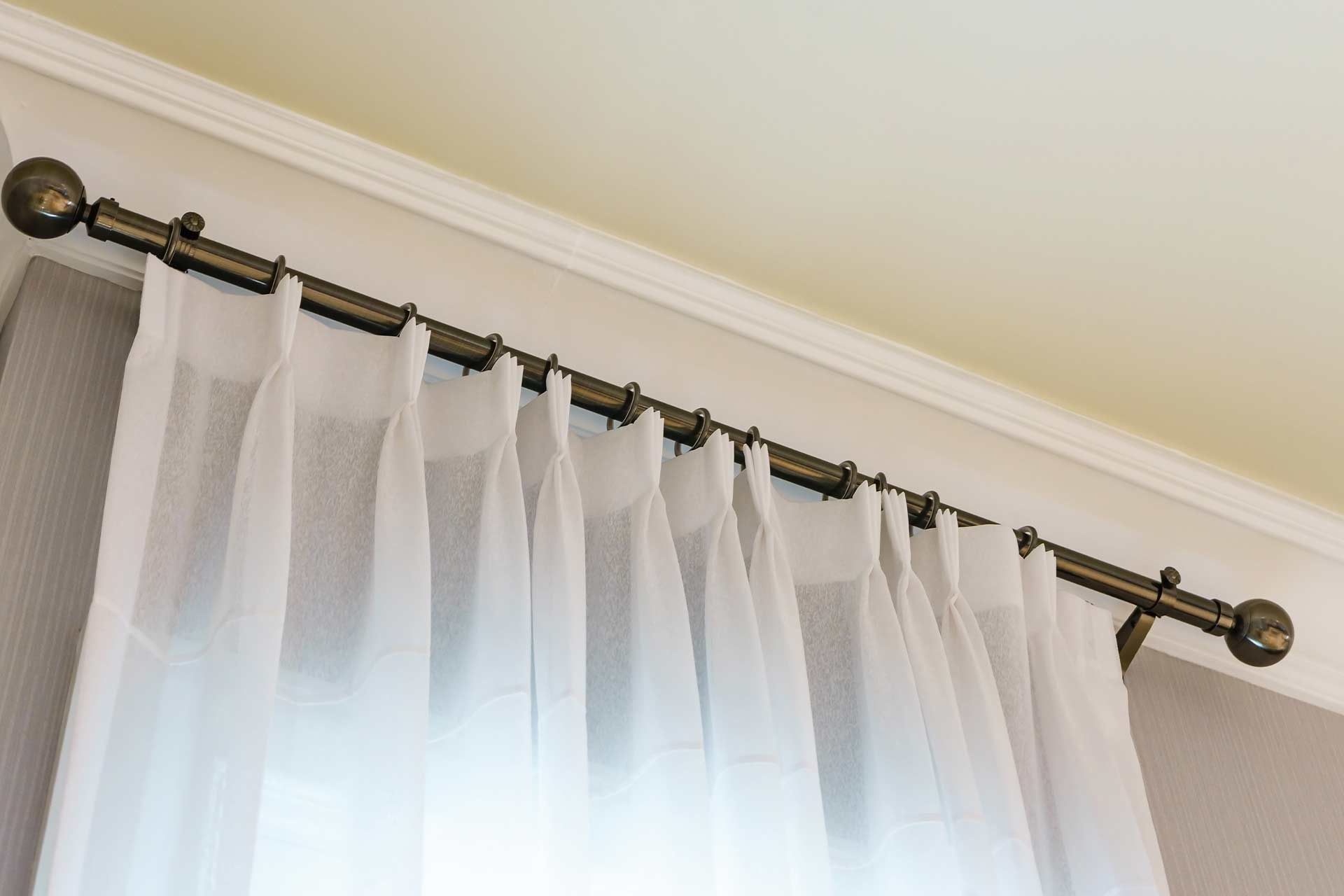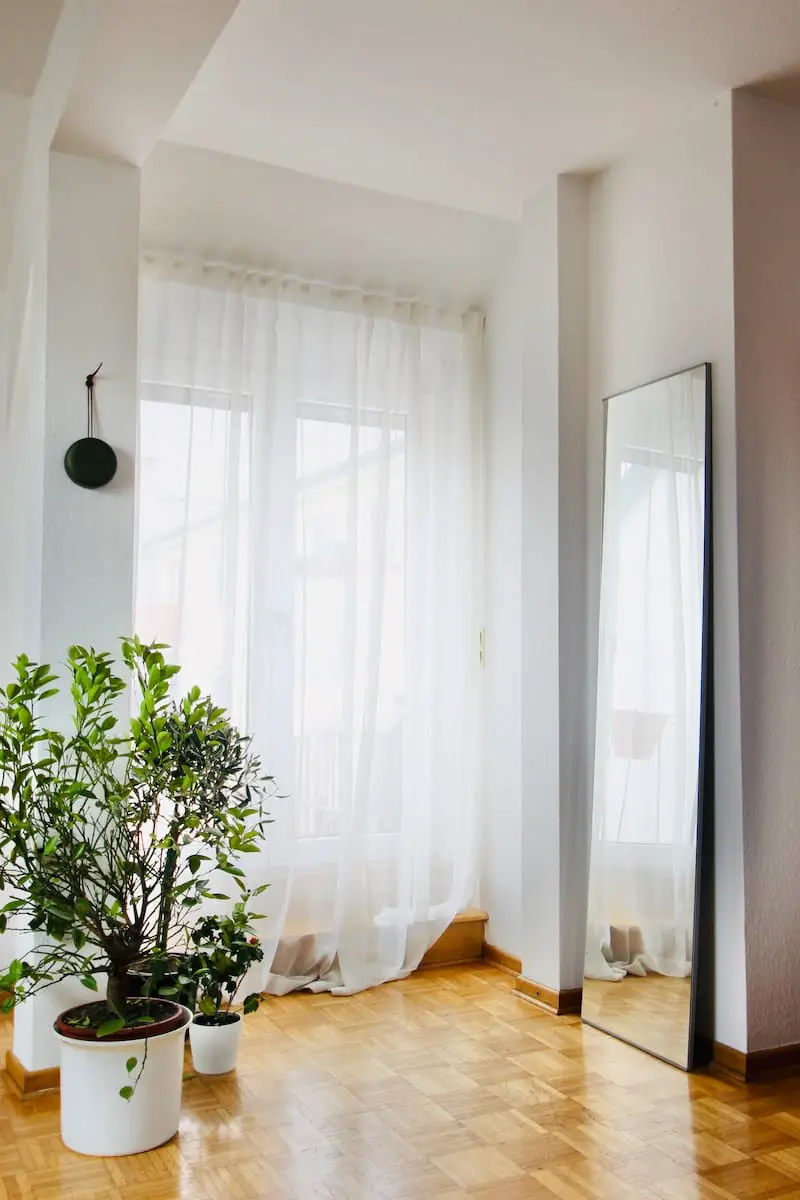Curtain rod holes are a common problem that many homeowners face. Whether your curtain rod falls out of the wall, leaves unsightly marks or damages the drywall, you may be wondering how to fix it and make your walls look good as new. Fortunately, patching curtain rod holes is not a difficult task, and you can do it yourself with some basic tools and materials. Here are some tips on how to patch curtain rod holes and make your walls look good as new.
Patching curtain rod holes is easy and quick. You just need to consider these steps:
- Get the right tools and materials
- Clear out the hole and scrape out any drywall remnants
- Stuff the hole with newspaper or a mesh patch
- Fill the hole with patching compound or spackle paste
- Sand and paint the patch
- Measure and rehang your curtains
Get the Right Tools and Materials
The first step in patching curtain rod holes is to get the right tools and materials. You will need:
- A screwdriver with a flat head
- A hammer
- A drill with a 3/16-inch drill bit (optional)
- A utility knife or scissors
- A tape measure
- A pencil
- A level
- Newspaper or a mesh patch
- A small bowl
- Patching compound or spackle paste
- A putty knife or a 4-inch drywall knife
- 120-grit sandpaper
- Primer for drywall
- Paint that matches your wall color
- A paintbrush or a roller

Clear Out the Hole and Scrape Out Any Drywall Remnants
The second step in patching curtain rod holes is to clear out the hole and scrape out any drywall remnants. You will need to:
- Use a flat-head screwdriver to clear out the hole and scrape out any drywall remnants. Be careful not to damage the surrounding wall or make the hole bigger.
- If the hole is larger than an inch, you may need to drill new holes for the anchors. Use a 3/16-inch drill bit to drill new holes on either side of the existing hole, about an inch apart. Tap an anchor into each hole with a hammer.
- If the hole is smaller than an inch, you can skip this step.
Stuff the Hole with Newspaper or a Mesh Patch
The third step in patching curtain rod holes is to stuff the hole with newspaper or a mesh patch. You will need to:
- If you are using newspaper, crumple up a piece of newspaper and stuff it into the hole. Make sure it sits tightly in the hole and supports the patching compound.
- If you are using a mesh patch, cut a piece of mesh patch that is slightly larger than the hole. Peel off the backing paper and stick it over the hole. Press it firmly onto the wall.

Fill the Hole with Patching Compound or Spackle Paste
The fourth step in patching curtain rod holes is to fill the hole with patching compound or spackle paste. You will need to:
- If you are using patching compound, mix it with water in a small bowl according to the package instructions. Stir it well until it has a smooth consistency.
- If you are using spackle paste, you can use it directly from the container.
- Use a putty knife or a 4-inch drywall knife to apply the patching compound or spackle paste over the hole. Cover the newspaper or mesh patch completely and smooth out any excess material. Make sure there are no air bubbles or gaps in the patch.
- Let the patch dry completely according to the package instructions. It may take several hours or overnight depending on the size of the hole and the humidity level.
Sand and Paint the Patch
The fifth step in patching curtain rod holes is to sand and paint the patch. You will need to:
- Use 120-grit sandpaper to sand the patch until it is smooth and flush with the wall. Wipe off any dust with a damp cloth.
- Apply primer for drywall over the patch with a paintbrush or a roller. Let it dry completely according to the package instructions.
- Apply paint that matches your wall color over the primer with a paintbrush or a roller. Let it dry completely according to the package instructions.
- Apply a second coat of paint if needed for better coverage.
Measure and Rehang Your Curtains
The final step in patching curtain rod holes is to measure and rehang your curtains. You will need to:
- Measure the width and height of your window and decide how high and wide you want to hang your curtains.
- Mark the position of the brackets on the wall using a tape measure, a pencil and a level. Make sure they are aligned and level with each other.
- Drill holes on the marked spots using a drill and insert the anchors into the holes.
- Attach the brackets to the wall using screws and a screwdriver.
- Slide the curtain panels onto the rod and attach the finials if needed.
- Place the rod on the brackets and secure it with screws or clips provided.

FAQs
Q: How do I prevent curtain rod holes from happening again?
A: To prevent curtain rod holes from happening again, you can:
- Use heavy-duty curtain rods, brackets, anchors and screws that can support the weight of your curtains.
- Use a level and a tape measure to make sure your brackets are aligned and level with each other.
- Avoid pulling or yanking on your curtains or letting kids or pets play with them.
- Check your curtain rods regularly for any signs of looseness or sagging and tighten them if needed.
Q: How do I hide curtain rod holes without patching them?
A: If you don’t want to patch your curtain rod holes, you can try to hide them by:
- Using decorative wall stickers, decals or art to cover them up.
- Using wallpaper, fabric or contact paper to cover them up.
- Using plants, shelves or furniture to block them from view.
Q: How do I patch curtain rod holes in plaster walls?
A: To patch curtain rod holes in plaster walls, you can follow the same steps as for drywall walls, but you may need to use different materials. You will need:
- A screwdriver with a flat head
- A hammer
- A utility knife or scissors
- A tape measure
- A pencil
- A level
- Newspaper or a mesh patch
- A small bowl
- Plaster of Paris or spackle paste
- A putty knife or a 4-inch drywall knife
- 120-grit sandpaper
- Primer for plaster
- Paint that matches your wall color
- A paintbrush or a roller
The steps are:
- Clear out the hole and scrape out any plaster remnants with a screwdriver.
- Stuff the hole with newspaper or a mesh patch.
- Mix plaster of Paris or spackle paste with water in a small bowl according to the package instructions. Stir it well until it has a smooth consistency.
- Apply the plaster of Paris or spackle paste over the hole with a putty knife or a 4-inch drywall knife. Cover the newspaper or mesh patch completely and smooth out any excess material. Make sure there are no air bubbles or gaps in the patch.
- Let the patch dry completely according to the package instructions. It may take several hours or overnight depending on the size of the hole and the humidity level.
- Sand the patch until it is smooth and flush with the wall with 120-grit sandpaper. Wipe off any dust with a damp cloth.
- Apply primer for plaster over the patch with a paintbrush or a roller. Let it dry completely according to the package instructions.
- Apply paint that matches your wall color over the primer with a paintbrush or a roller. Let it dry completely according to the package instructions.
- Apply a second coat of paint if needed for better coverage.
Wrap It Up
Patching curtain rod holes is a simple and effective way to fix your walls and make them look good as new. You can patch your curtain rod holes using different types of tools and materials depending on the size and location of the holes. Remember to clear out the hole, stuff it with newspaper or a mesh patch, fill it with patching compound or spackle paste, sand and paint it, and measure and rehang your curtains. And don’t forget to prevent curtain rod holes from happening again by using heavy-duty curtain rods, brackets, anchors and screws, avoiding pulling or yanking on your curtains, and checking your curtain rods regularly for any signs of looseness or sagging.
Dale is the colorful mind behind HuetifulHomes.com, where he shows you how to create a home that is as fun and fabulous as you are. He has a passion for color and a knack for DIY, with years of interior design experience he shares his tips and tricks on how to create a home that reflects your personality and style. He believes that color is the key to happiness, and he wants to help you make your home more Huetiful.




